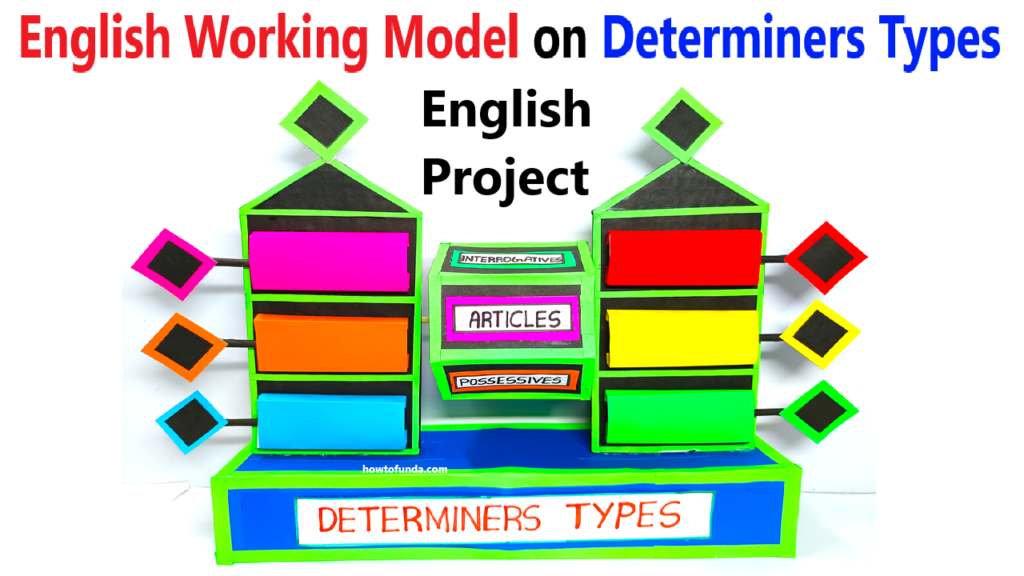Objective:
To create a visually appealing and educational working model that explains the types of determiners (e.g., articles, demonstratives, possessives, quantifiers, etc.) using cardboard and colored paper.

Materials Required:
- Cardboard sheet (as the base for the model)
- Colored paper (for sections and decorative purposes)
- Markers or sketch pens (for writing)
- Printed or handwritten examples of determiners
- Glue, scissors, and tape
- Chart paper or foam sheets (optional, for extra durability)
- Illustrations or small pictures (to make the model engaging)
- Flaps or sliders (optional, for interactive features)
Steps to Build the Model on Types of Determiners:
- Prepare the Base:
- Use a large cardboard sheet as the foundation.
- Cover it with colored paper or chart paper for a neat and vibrant background.
- Divide into Sections:
- Divide the board into sections for each type of determiner:
- Articles (a, an, the)
- Demonstratives (this, that, these, those)
- Possessives (my, your, his, her, etc.)
- Quantifiers (some, many, few, much, etc.)
- Distributives (each, every, either, neither)
- Numbers (one, two, three, etc.)
- Use different colors for each section to make it visually distinct.
- Divide the board into sections for each type of determiner:
- Add Definitions:
- Write or print a concise definition of each type of determiner in its respective section. Example:
- Articles: Words that define nouns as specific or unspecific.
- Possessives: Words that show ownership or possession.
- Write or print a concise definition of each type of determiner in its respective section. Example:
- Include Examples:
- Write or print 2–3 examples for each type of determiner and place them below the definition. Example:
- Articles: “She bought a book.” / “He read the story.”
- Write or print 2–3 examples for each type of determiner and place them below the definition. Example:
- Decorate the Sections:
- Add small illustrations or images that match the examples (e.g., a book for articles, pointing hands for demonstratives).
- Use creative borders or shapes for each section.
- Add Interactive Features (Optional):
- Flaps: Create flaps with questions or examples where students guess the type of determiner. When the flap is lifted, the correct answer is revealed.
- Sliders: Build sliders where students can match determiners with their types.
- Title the Model:
- Place a bold and colorful title at the top: “Types of Determiners.”
- Final Touch:
- Add decorative elements like stickers, glitter, or patterns for an appealing look.

